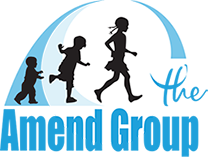- Home
- About
- Providers
- Appointments
- Forms
- About Gifted Children
- Articles by Dr. Amend
- What is Giftedness?
- Gifted Children in the Real World
- Myths and Assumptions
- Asynchronous or Uneven Development
- Characteristics of Gifted Children: A Closer Look
- Misdiagnosis and Dual Diagnoses of Gifted Children and Adults
- Tips for Parents: Worry and the Gifted: How Much is Too Much?
- Individual Assessment of Gifted Children
- What Do You Say to Gifted Children?
- The Amend Group Consulting Services for Parents
- Resources
- Stanford-binet
- What is a Twice-Exceptional (2e) Child?
- Anxiety Facts
- Mostly Do’s (and a few Don’ts) about Gifted Children
- Checklist of Symptoms of Student Burnout
- Signs and Possible Causes of Depression
- Examples of Irrational Beliefs/Thinking Errors
- The Wechsler Intelligence Scale for Children-Fourth Edition
- Links to Other Gifted/Talented Resources
- Frequently Asked Questions
- Articles by Dr. Amend
When I began my work with gifted and talented children more than ten years ago, I learned about what my mentor Jim Webb (co-author of the ground-breaking book Guiding the Gifted Child) called "myths" related to gifted children. These myths and assumptions, he would say, are common among parents, teachers, and the general population. Since then, I have learned first-hand from parents, teachers and the general population that some of these myths remain prevalent today. While I can comfortably say these myths are not as common as they were twenty years ago, they still exist and still create difficulties for some of our gifted children at home and in school. Let's look at some myths and facts about gifted children.
MYTH: Gifted children do not know they are gifted or different from others.
REALITY: Although a gifted child may not know the word gifted, they often recognize very early that they are different from other children. They may have different interests, more intense interests, or larger vocabularies that turn other children off. Their unusual sense of humor can get them branded as "weird" or "dumb." Many young gifted children have described their thoughts that they "must be an alien" because they feel so different from everyone else and no one seems to understand them. Telling a child he/she is gifted (and helping them understand their strengths and weaknesses) can help them understand these differences in a positive light rather than the negative one they usually come up with on their own.
MYTH: They can succeed without help.
REALITY: This is one of the biggest myths about our gifted children—they will not be just fine on their own. We must remember that gifted children are as far above average as our mentally disabled are below average. Similarly, both groups need specialized educational services to help meet their needs. Of course, the educational services needed differ for the groups, but specialized services are needed for both groups to develop appropriately. Research suggests that a gifted child's adjustment is directly related to the extent to which the child's educational needs are met.
MYTH: They naturally want to be social isolates.
REALITY: Most gifted children do feel different from their age peers and like to spend some time alone. However, when presented with a "true" peer, gifted children often prefer spending time with that person rather than being alone. When Dominic, a child noted by his school as having no friends, met other gifted children in a safe atmosphere, he chose to spend time with those peers rather than go to an amusement park with his mother. There is little doubt he would have chosen the amusement park if given the choice between it and the age peers in his school. Gifted children may gravitate toward peers for certain things, like chess or Minecraft, but these may not be children of the same age and are more likely to be "peers" with similar interests.
MYTH: They are more/less mature and stable emotionally than other children.
REALITY: Both of these myths are often heard. Although the available research shows that gifted children are at least as well adjusted as other groups of youngsters, gifted children face risks to their social and emotional development—because of their giftedness—that other groups do not face. The tendency toward perfectionism, the susceptibility to existential depression, and the uneven or asynchronous development of the gifted child can create tension within a gifted individual and both at home and in the classroom. The mismatch of educational services and the inadequate support to deal with peer and societal pressures to conform and "be like everyone else" can contribute to adjustment difficulties.
To learn more about the myths and assumptions related to gifted children, take a closer look at A Parent's Guide to Gifted Children by Webb, Gore, Amend and DeVries. Being aware of these myths and your own beliefs and assumptions about gifted children will help you in your efforts as a parent, teacher, mentor, or friend of a gifted child.
